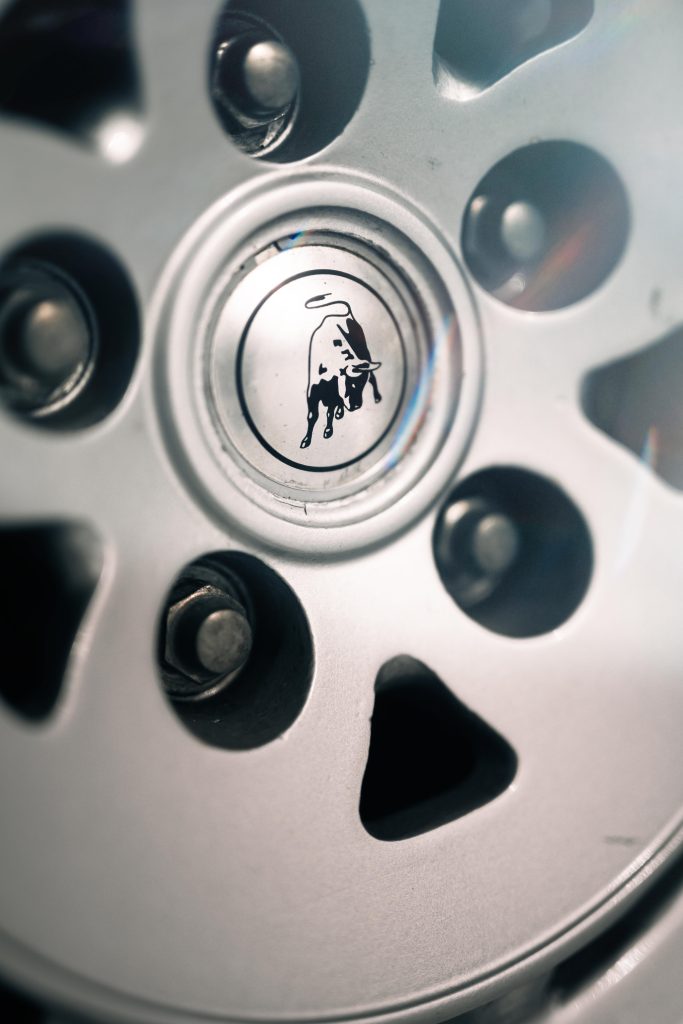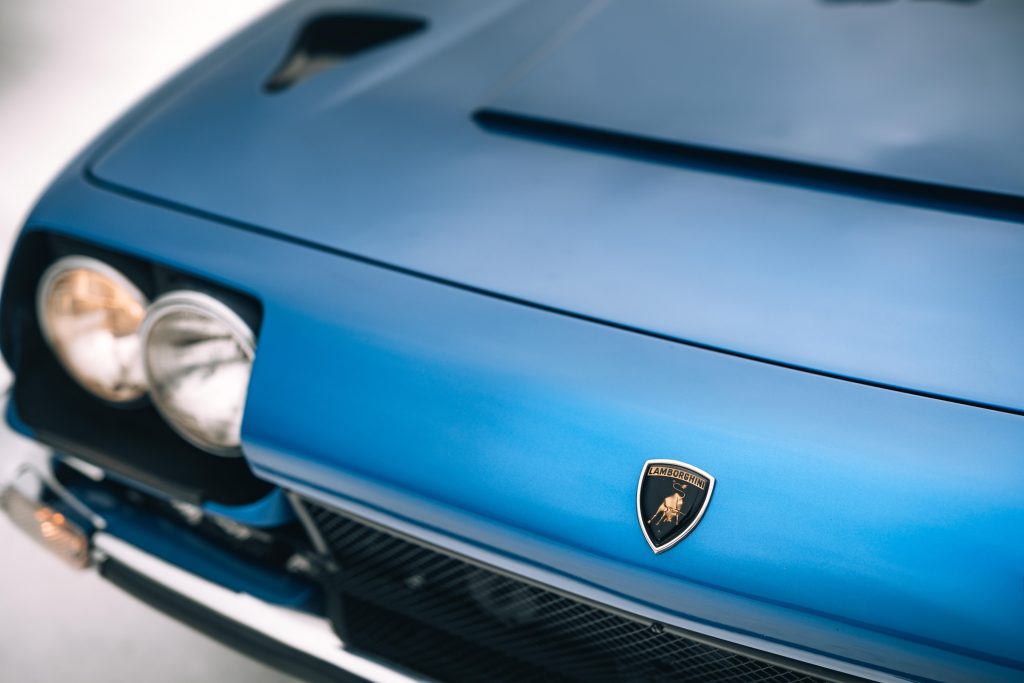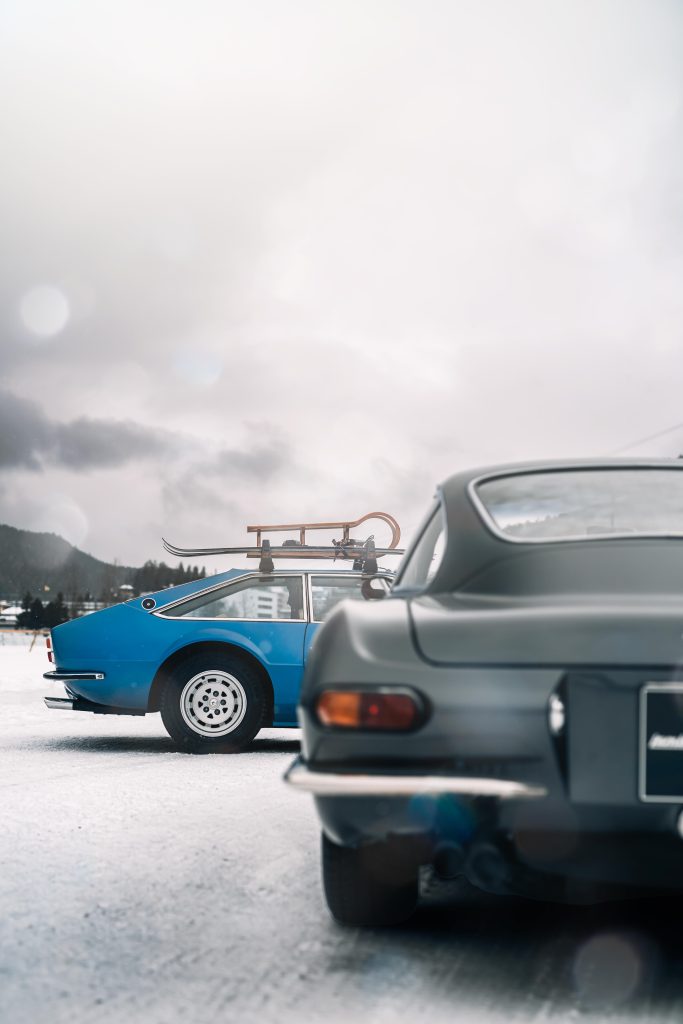Lamborghini Braves Winter To Display 2 Classic GTs At The I.C.E

Lamborghini brought along a 1973 Jarama GTS and 1968 400 GT 2+2 to display on the frozen lake of St. Moritz.
While most classic Lamborghinis are typically scurried away into their climate controlled cocoons by their owners when there is even the lightest sprinkle of rain forecast, the supercar marque itself however has decided to brave the snow once more and for the second year in a row, showcased some glorious old bulls at The I.C.E. (International Concours of Elegance) organised on the frozen lake of St. Moritz.
Taking place on the 23rd and 24th of February, the House of Sant’Agata Bolognese was to be represented at the event by Lamborghini Polo Storico, the automaker’s own in-house classic restoration arm. And the two classic bulls that were wheeled out for this concourse were a 1973 Jarama GTS, complete with ski rack, skis and toboggan, and a 1968 400 GT 2+2.
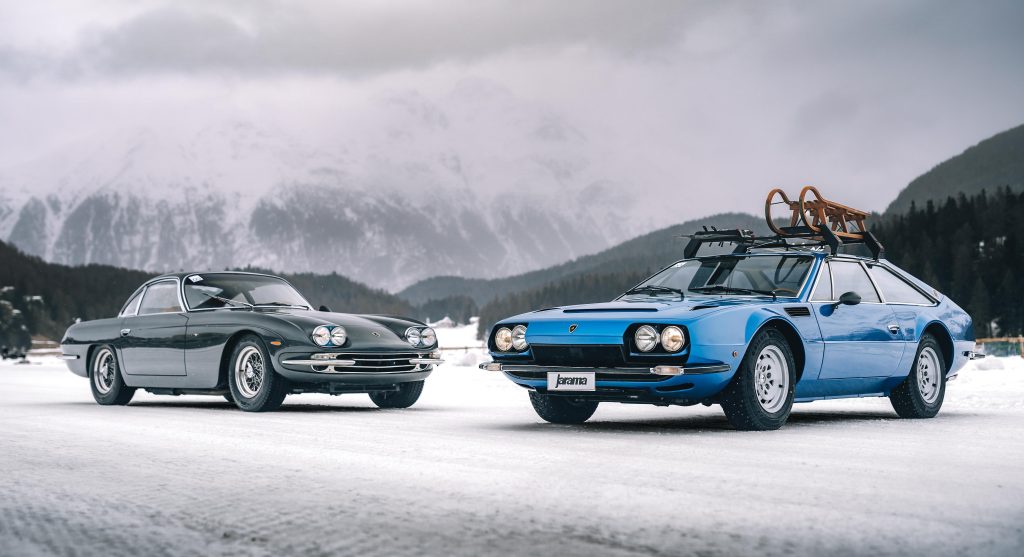
Although representative of two different historical decades — the 1960s with its rounded shapes and the 1970s with its characteristic angular design — both these classic Lamborghini 2+2s featured in St. Moritz are equipped with the same powerplant: the legendary 4-litre V12, with twin overhead camshafts in the front longitudinal position.
1973 Jarama GTS
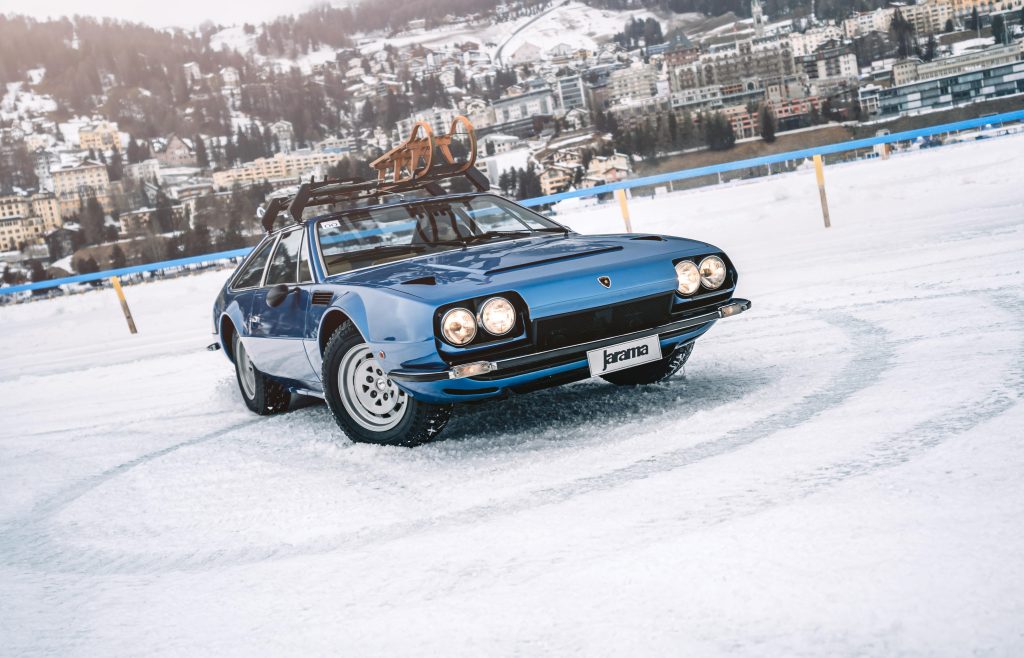
The Jarama GT was first presented at the Geneva Motor Show in March 1970, and was Lamborghini’s new GT 2+2 to replace the Islero, from it retains the mechanics. Featuring a wedge-shaped silhouette that was penned by Bertone, this particular classic bull is to be the only model in the company’s history to net motorised ‘eyelids’ which cover the front headlights when not in use.
In 1972, the Jarama GTS landed the same 4-litre but was now tweaked to churn out 365 hp. This souped-up grand tourer also netted some aesthetic changes, such as a raised air intake on the hood, air intakes on the front fenders and newly designed Campagnolo wheel rims. Inside the cabin, the higher-spec further saw it net seats with contoured backrests to allow better roominess for the rear seats, an aluminium fascia to cover the dashboard, new secondary button arrangement and standard power steering.

Production of the Jeramy lasted until 1976, and when it went out of production no replacement model was planned. A total of 327 units of this particular bull were produced: 177 GTs and 150 GTSs. The 1973 GTS on display in St. Moritz, now owned by Automobili Lamborghini, was sold new in Sicily and is in its original configuration with Blu Tahiti body and mustard-yellow interior.

1968 400 GT 2+2
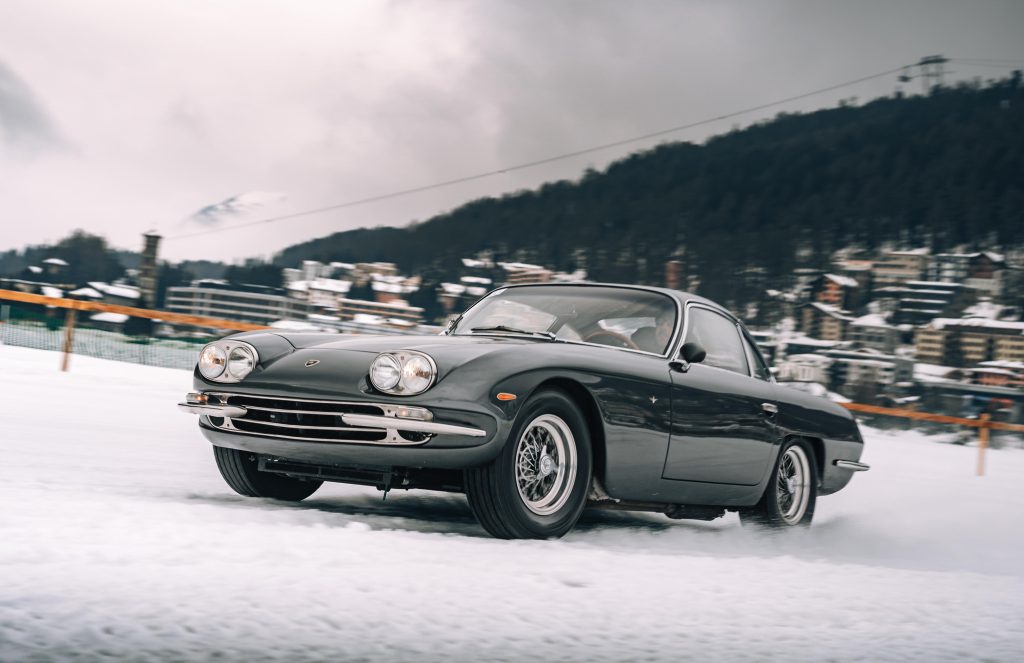
Lamborghini’s 400 GT was the second car in the automaker’s lineup when it made its debut at the 1966 Geneva Motor Show. Serving as a 2+2 variant to its 350 GT counterpart, it featured a rump that has been raised by 6.5 centimetres (to better enable passengers to fit behind) and came equipped with a V12 that has its capacity bumped to 4-litres (from 3.5-litres in the 350 GT), delivering 320 hp at 6500 rpm thanks to the increased bore.
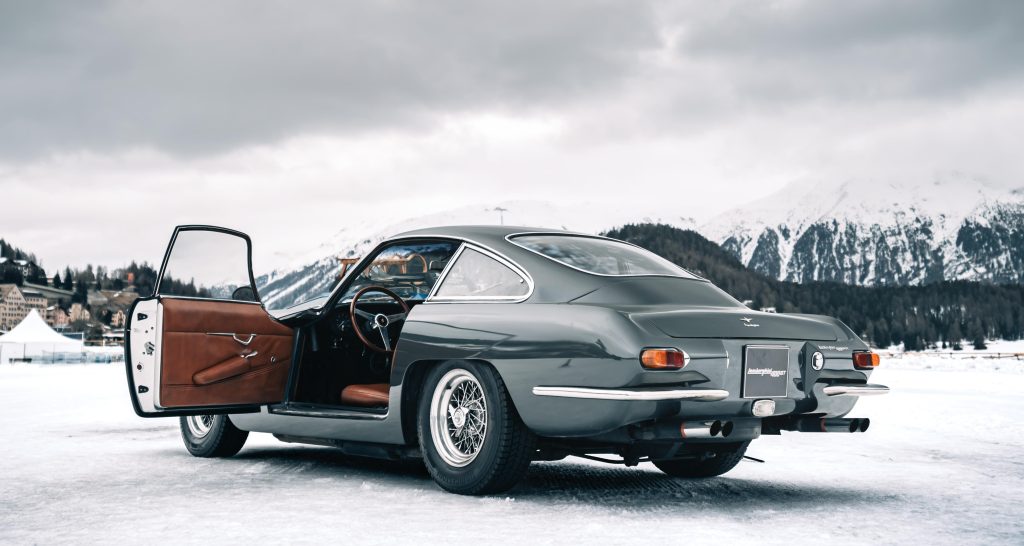
With the 400 GT, the V12 engine reached its perfect stage of development and would become Lamborghini’s signature engine, going on to equip, with their respective evolutions, all 12-cylinder cars produced in the following decade in Sant’Agata Bolognese. The 400 GT also adopted the Lamborghini gearbox and differential, designed and made in-house, and a revised rear suspension.
In the October 1966 issue of American Road & Track magazine, the 400 GT was called “the best GT we’ve ever had a chance to test,” a remark that pleased Ferruccio Lamborghini who, only three years earlier, had begun his new venture with the desire to make just the best GT in the world. The 400 GT 2+2 on show in St. Moritz was delivered in March 1968 to the Grand Garage des Nations in Geneva, in the Grigio Saint Vincent livery with tobacco-brown interior and is now part of the collection of the Automobili Lamborghini Museum.

The I.C.E
The I.C.E., now in its third edition, has established itself right from the start as one of the most captivating events in the world of classic cars. In addition to the concours itself, where the over 50 cars entered are judged not only by specialists in the field but also by artists and architects, the main attraction of the event is the stage on which it takes place: the frozen lake of St. Moritz nestled in the Engadine valley.
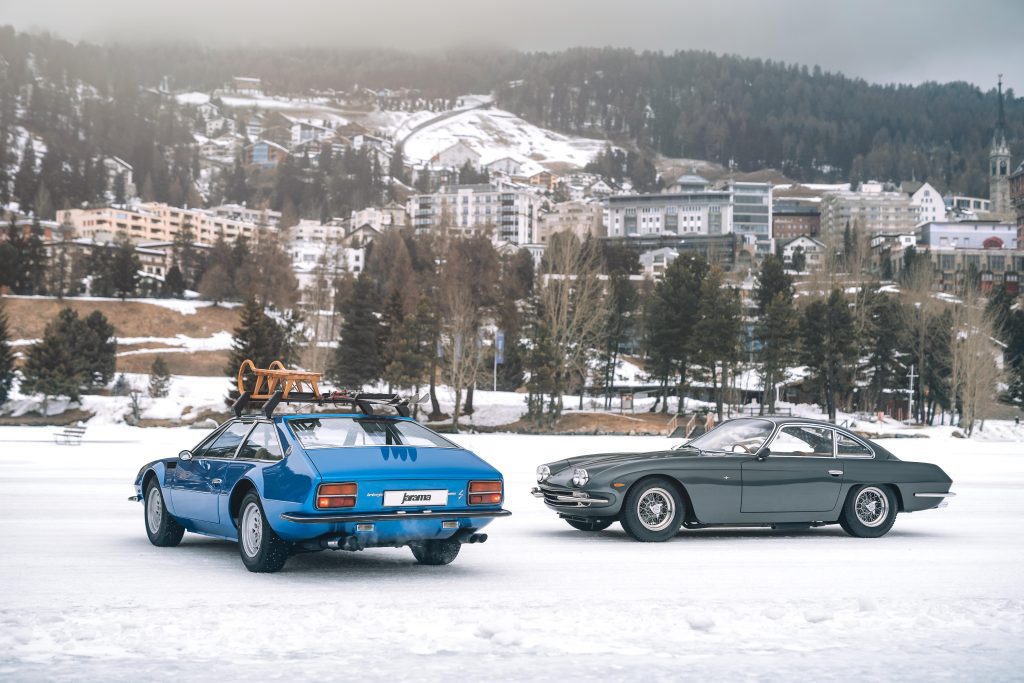
Alessandro Farmeschi, Global After Sales Director of Automobili Lamborghini, remarked, “Polo Storico’s participation in The I.C.E. was an opportunity to meet our customers and enthusiasts of classic Lamborghini models in a truly unique setting. This event is close to our own spirit and our way of celebrating the passion for our classic cars: beautiful to see but also fun and exciting to drive. It is an unusual context in which to see a historic Lamborghini, even more so when these are cars that are usually admired in our museum.”
With its presence in St. Moritz, Lamborghini Polo Storico begins its 2024 together with customers and enthusiasts, ushering in a year already full of goals, certifications and restorations, confirming an increasing commitment to preserving the historical heritage of the House of Sant’Agata Bolognese.






